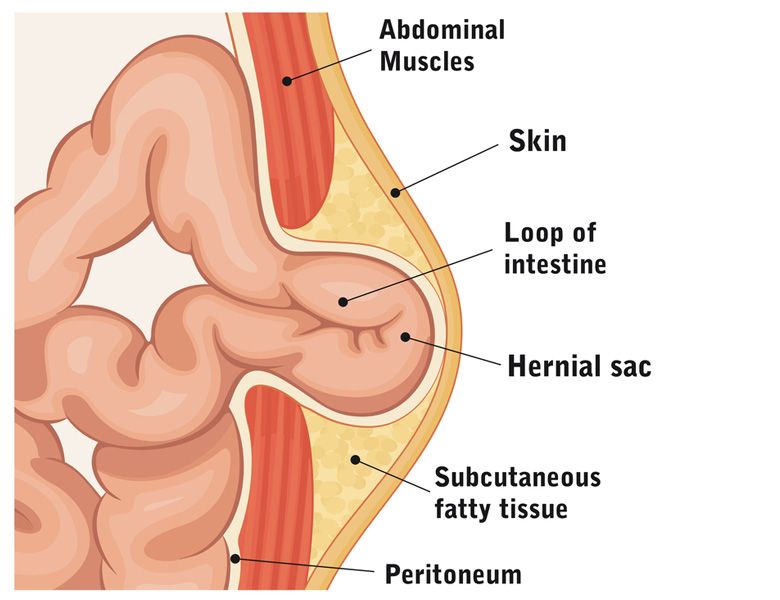Umbilical Hernia: Symptoms, Causes, Treatment
What are the symptoms of an umbilical hernia?
An umbilical hernia occurs when a portion of the intestine or abdominal tissue protrudes through a weak spot in the abdominal muscles near the belly button (umbilicus). Symptoms of an umbilical hernia can include:
- A visible bulge or swelling near the belly button: This is the most common symptom of an umbilical hernia. The bulge may be more noticeable when the baby cries, coughs, or strains.
- Pain or discomfort: In some cases, an umbilical hernia may cause pain or discomfort, especially when the baby is crying or straining.
- Tenderness or redness around the umbilicus: The skin around the belly button may be tender or red if an umbilical hernia is present.
- Vomiting or constipation: In rare cases, an umbilical hernia may cause symptoms such as vomiting or constipation if it is blocking the intestine.
Umbilical hernias are common in newborns and infants, and they usually do not cause any serious problems. In many cases, umbilical hernias will close on their own by the time the child is 1-2 years old. However, if an umbilical hernia persists beyond this age or if it becomes larger or more painful, surgery may be needed to repair it. If you notice any symptoms of an umbilical hernia in your child, it’s important to consult with a healthcare provider for proper evaluation and management.
What are the causes of an umbilical hernia?
Umbilical hernias occur when there is a weakness in the abdominal wall muscles near the belly button (umbilicus). This weakness allows abdominal tissue or part of the intestine to protrude through, forming a hernia. Some common causes and risk factors for umbilical hernias include:
- Weak abdominal muscles: Infants are born with a small opening in their abdominal muscles where the umbilical cord passes through. If this opening does not close properly after birth, it can lead to a weakness in the abdominal wall muscles, making it more likely for an umbilical hernia to develop.
- Increased pressure in the abdomen: Anything that increases pressure in the abdomen can contribute to the development of an umbilical hernia. This can include factors such as obesity, multiple pregnancies, or conditions that cause increased abdominal pressure, such as chronic coughing or constipation.
- Genetics: Some babies may inherit a tendency to develop umbilical hernias from their parents.
- Premature birth: Babies born prematurely are more likely to have umbilical hernias, as their abdominal muscles may not have fully developed.
- Ascites: Ascites is a condition in which fluid accumulates in the abdomen, leading to increased pressure. This can increase the risk of developing an umbilical hernia.
- History of abdominal surgery: Previous abdominal surgery can weaken the abdominal muscles and increase the risk of developing a hernia.
While umbilical hernias are more common in infants and young children, they can also occur in adults. In adults, umbilical hernias are often caused by factors that increase abdominal pressure, such as obesity, pregnancy, heavy lifting, or chronic coughing. In some cases, umbilical hernias in adults may be associated with conditions such as ascites or a history of abdominal surgery.
What is the treatment for an umbilical hernia?
The treatment for an umbilical hernia depends on the size of the hernia and whether it is causing any symptoms. In many cases, umbilical hernias in infants will close on their own by the age of 1-2 years as the abdominal muscles strengthen. However, if an umbilical hernia persists beyond this age or if it is causing symptoms, treatment may be needed. Treatment options for an umbilical hernia may include:
- Observation: If the umbilical hernia is small and not causing any symptoms, your healthcare provider may recommend simply monitoring it to see if it improves on its own.
- Surgery: If the umbilical hernia is large, causing symptoms, or persists beyond the age of 2 years, surgery may be recommended to repair the hernia. During the surgery, the protruding tissue is pushed back into place, and the abdominal wall muscles are stitched together to close the opening. Surgery for an umbilical hernia is usually performed as an outpatient procedure under general anesthesia.
- Supportive measures: In some cases, your healthcare provider may recommend using a supportive device, such as a hernia belt or truss, to help support the hernia and reduce symptoms. However, these devices are typically used only as a temporary measure and are not a long-term solution.
It’s important to consult with a healthcare provider for proper evaluation and management if you or your child has an umbilical hernia. While most umbilical hernias do not cause serious problems, they can occasionally lead to complications such as incarceration (when the herniated tissue becomes trapped and cannot be pushed back into place) or strangulation (when the blood supply to the herniated tissue is cut off). Prompt medical attention is needed if you experience symptoms such as severe pain, vomiting, or redness and swelling at the hernia site, as these may be signs of a complication that requires immediate treatment.




